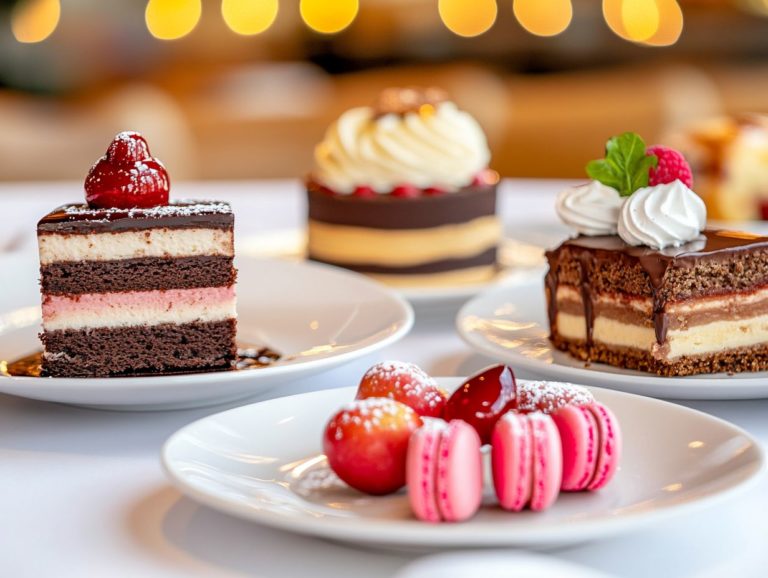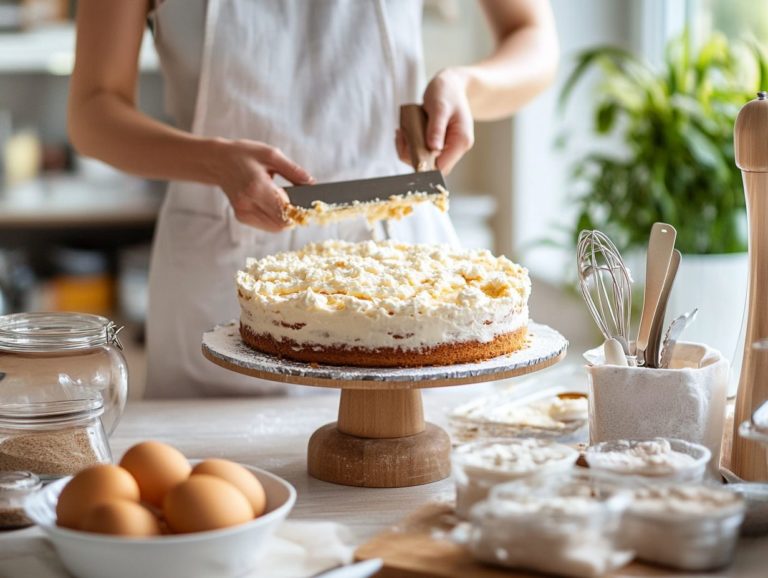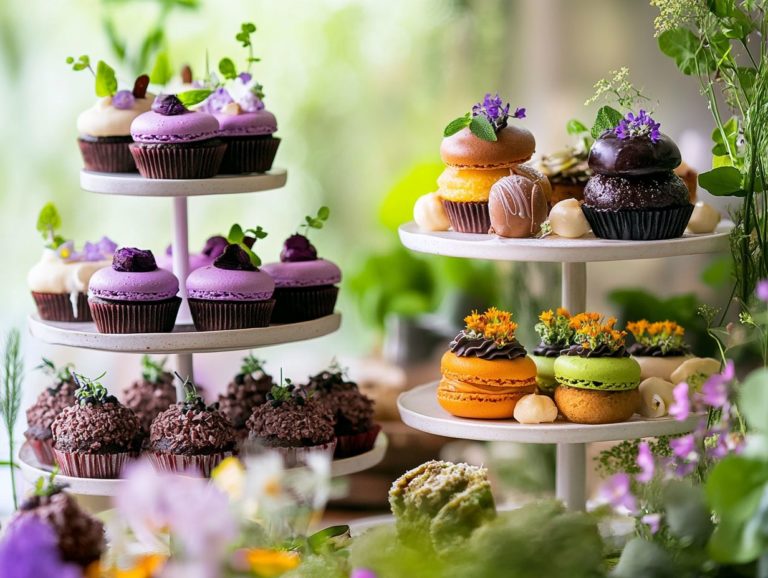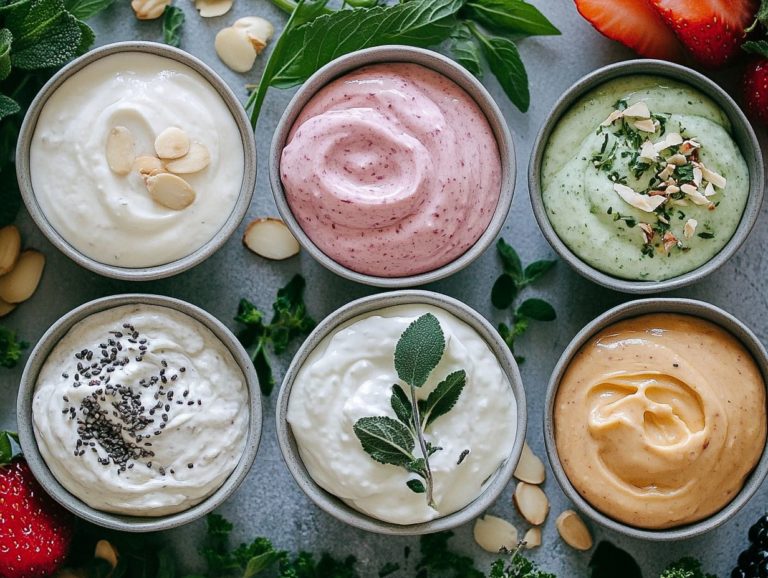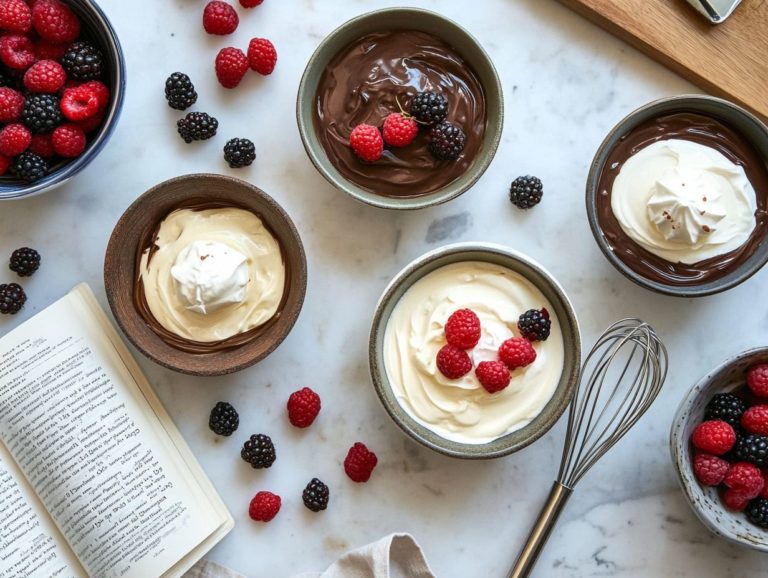What Is the Secret to Moist Cakes?
Contents
- The Secret to Moist Cakes
- Key Takeaways:
- What Makes a Cake Moist?
- How to Keep a Moist Cake?
- Tips for Keeping Your Cake Moist
- Tips for Baking a Moist Cake
- What Are Some Common Mistakes That Can Lead to Dry Cakes?
- 2. Using Too Much Flour
- 3. Not Enough Liquid
- Frequently Asked Questions – Baking Success
- What Is the Secret to Moist Cakes? – Kitchen Tips
- How can I ensure my cakes turn out moist? – Recipe and Baking Method
- Can I substitute oil for butter in cake recipes to make them more moist? – Culinary Techniques
- Why are my cakes always dry and crumbly? – Kitchen Tips
- Are there any ingredients I can add to my cake batter to make it more moist? – Cake Development
- How can I make sure my cakes stay moist after baking? – Sweet Treats
The Secret to Moist Cakes
A moist cake is the holy grail of baking, elevating a simple dessert into a truly delightful experience. From classic cake recipes to innovative twists, achieving a moist cake is every baker’s dream.
But what exactly makes a cake moist? This article delves into the essential ingredients, baking tools, mixing methods, and baking techniques that contribute to achieving that perfect texture.
You ll also discover baking tips for maintaining that luscious moisture long after the cake has left the oven, common pitfalls to steer clear of, and expert insights to ensure your cakes turn out exquisitely tender each time.
Get ready to take your baking skills to the next level!
Key Takeaways:
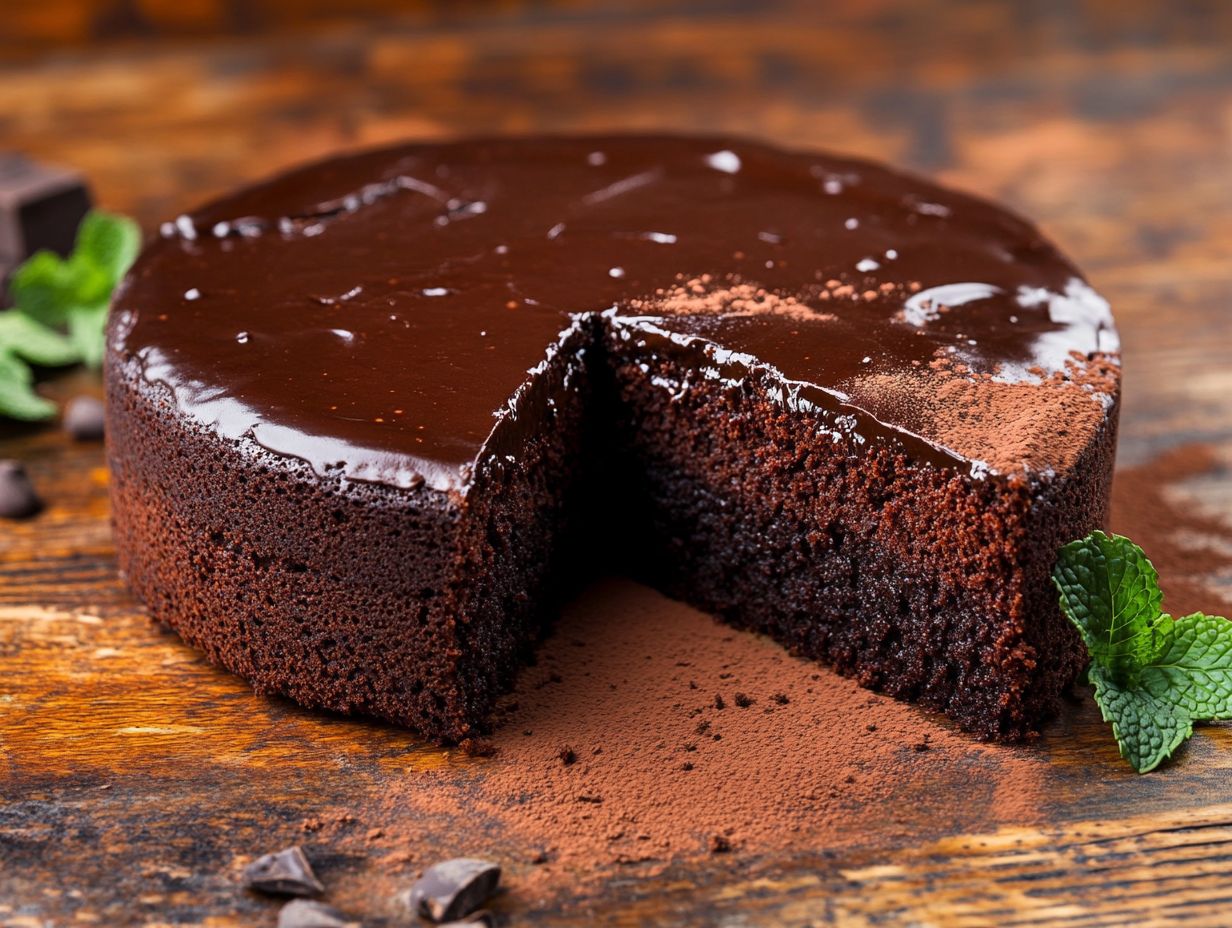
- Use the right ingredients, mixing methods, and baking time and temperature to create a moist cake and achieve baking success.
- Maintain moisture in cakes by storing them properly, using simple syrup, a cake moisturizer, or incorporating moistening agents like sour cream.
- Follow these tips for moist cakes: use room temperature ingredients, avoid overmixing, test with a cake tester, and allow the cake to cool properly for consistent quality results.
What Makes a Cake Moist?
A moist cake comes from a good mix of essential factors that elevate an ordinary recipe to something truly extraordinary. Your choice of ingredients is important; incorporating elements like cake flour, sour cream, and vegetable oil can significantly boost the moisture content.
It’s also vital to understand the balance of liquid ingredients, such as buttermilk and eggs, along with effective baking techniques involving temperature and timing. By mastering these processes, you can achieve the quality results that every home baker aspires to, ensuring that each slice is a delightful experience.
1. The Cake Ingredients
The ingredients you choose play an important role in determining the moisture content of your cake, affecting not just flavor but also the overall texture and crumb structure (which refers to how the inside of the cake looks and feels). When you use room temperature butter, you promote even blending. Adding moistening agents like sour cream and buttermilk infuses extra moisture, leading to a beautifully tender cake.
Consider using a cake flour substitute if cake flour is unavailable, as it can achieve a similar effect. The right amount of baking powder and baking soda is also essential; they influence the cake s rise and density, ultimately shaping the final texture. These leavening agents are crucial for proper cake development.
Your choice between butter and oil can also significantly change the cake’s texture. Butter imparts a rich flavor and creates a firmer structure, while oil yields a softer, more moist crumb. Precision is key when measuring liquid ingredients; even a slight imbalance can greatly alter moisture levels, which is essential for achieving the perfect cake structure and texture.
If you decide to use sugar substitutes, be aware of their moisture-retaining properties compared to regular sugar, as some can lead to a drier cake. Adjusting the amounts might be necessary to maintain the desired cake quality.
Always take the time to spoon and level your dry ingredients accurately. This attention to detail ensures that each cake you bake achieves that ideal balance of lightness and moisture. Properly measuring flour and other dry ingredients is a fundamental step in the baking process.
Now that you understand the ingredients, it’s time to put your knowledge into action and start baking your perfect moist cake!
2. The Mixing Technique
The mixing method is a pivotal step in cake baking that can truly make or break the moistness you’re aiming for. When you mix the cake batter properly, you ensure that every ingredient is evenly distributed, leading to a uniform structure and a wonderfully moist crumb.
Be mindful to avoid overmixing, as that can result in a dense cake with an undesirable texture that detracts from the overall quality of your dessert. Proper mixing techniques are essential for optimal cake quality.
Different mixing techniques affect cake perfection. For instance, when you cream butter and sugar together until light and fluffy, you introduce air into the mixture, which creates a tender crumb. On the other hand, gently folding in dry ingredients helps minimize gluten formation, keeping your cake light and airy. These baking techniques significantly impact the final texture and flavor outcome.
Pay attention to mixing duration. Mixing inadequately may leave you with lumps and uneven textures, while excessive mixing can lead to toughness. The right mixing technique ensures an even cake crumb and enhances overall cake quality.
To strike the ideal balance, aim to mix just until the ingredients are combined. This way, your cake retains its moisture without sacrificing that delightful, airy quality that everyone loves.
3. The Baking Time and Baking Temperature
Achieving the perfect baking time and temperature is essential for producing a moist cake that is both delicious and visually stunning, with beautifully defined layers. The baking temperature plays a crucial role in how quickly your cake rises and sets.
If it s too high, you risk overbaking and ending up with a dry cake; if it s too low, you might find it doesn t bake properly at all. Keeping a close eye on the baking time is critical, as underbaking can leave you with a gooey center, while overbaking results in a tough texture that compromises the overall quality of your cake. Properly managing cooking time is part of the best baking practices.
To achieve those desired results, using an oven thermometer is invaluable. This little tool ensures that the actual temperature aligns with what you ve set, which can vary in many standard ovens. Regarding accurately gauging baking time, consider setting a timer a few minutes before the recipe suggests; this allows for timely adjustments. These kitchen tips help you maintain consistent cake quality.
Testing for doneness is simple: insert a cake tester or toothpick into the center. If it comes out clean or with just a few crumbs clinging to it, your cake is ready to shine. It s wise to take note of how your specific oven performs, as some may heat unevenly. You might need to make adjustments in temperature or baking time to consistently achieve that perfect bake.
How to Keep a Moist Cake?
Maintaining the moisture of your cake post-baking is equally crucial as the baking process itself. Neglecting proper storage can result in a dry texture that detracts from the quality of your delightful creation. Using a cake moisturizer helps retain moisture effectively.
One effective approach is to ensure proper storage by wrapping the cake in plastic wrap or placing it in an airtight container to seal in that precious moisture. Consider using simple syrup or a cake moisturizer to infuse hydration back into the layers, resulting in a delectably moist cake that stays fresh for an extended period.
These baking tips will keep your cake moist and delicious for days! With these simple steps, your cakes will always impress your friends and family!
Tips for Keeping Your Cake Moist
1. Proper Storage
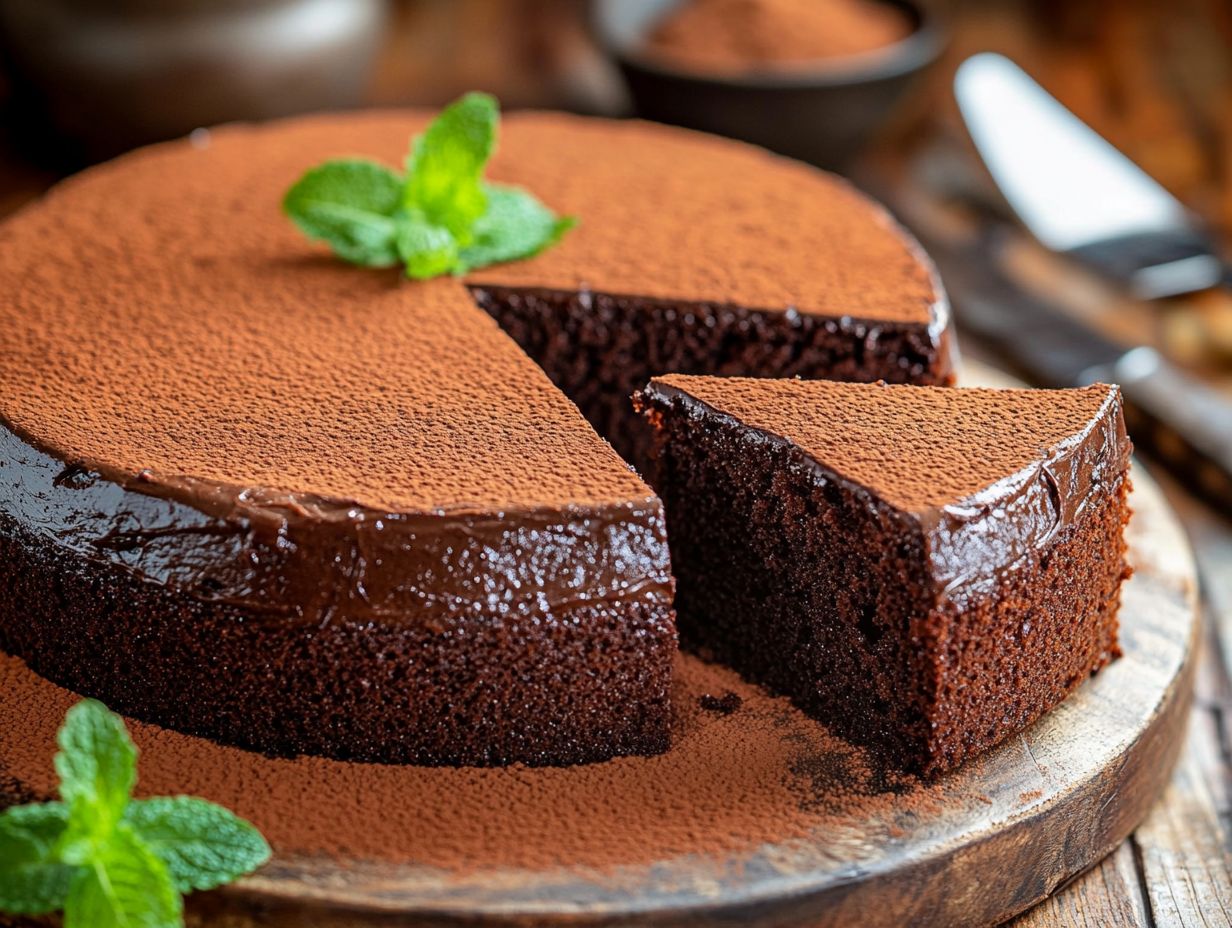
Proper storage is essential to preserving the moisture and overall quality of your cake after baking, preventing it from turning dry and stale. Airtight containers keep your cake fresh, as they minimize exposure to air, which can lead to moisture loss.
Wrapping your cake in plastic wrap or aluminum foil adds an extra layer of protection, ensuring that it retains its moist texture and delightful flavor. Consider how well different storage methods work. A cake in an airtight container stays moist longer than one left uncovered.
If refrigeration is necessary, remember that this environment can sometimes sap moisture from cakes; therefore, wrapping them securely is crucial. On the other hand, freezing offers an excellent long-term solution, with proper wrapping to prevent freezer burn.
For the best results, cut your cake into portions before freezing, and consider placing parchment paper between layers to avoid sticking. This thoughtful combination of wrapping and storage techniques will guarantee a delightful cake experience, whether you re savoring it days or weeks after baking.
2. Adding Simple Syrup
Don’t miss out on using simple syrup to elevate your cake’s moisture and flavor! Adding simple syrup to your cake layers is a time-honored baking tip that can dramatically enhance both moisture retention and flavor. To create a simple syrup, dissolve equal parts sugar and water over heat.
Once ready, brush or pour this delightful concoction onto your cake layers, infusing them with essential hydration. This technique not only helps keep your cake moist but also opens the door to flavor infusion, making your dessert even more delightful.
By incorporating extracts like vanilla, almond, or a hint of citrus zest, you can craft a syrup that perfectly complements your cake. If you re feeling adventurous, substitute part of the water with fruit juice for a customized elixir, allowing your cake to burst with whimsical fruit flavors. These sweet treats become even better with these little adjustments.
When it’s time to apply the syrup, be sure to do so after the cake has cooled but while it’s still slightly warm this ensures best absorption. This thoughtful layer of sweetness transforms the overall texture, lending a tender mouthfeel that elevates each slice. Ultimately, these enhancements deeply influence the final dessert, making it richer and more enjoyable for everyone who gets to savor it. Frosting recipes also benefit from this moisture-retaining technique.
3. Using a Cake Moisturizer
A cake moisturizer is your secret weapon for moist, delicious cakes! Using a cake moisturizer is an excellent strategy to keep your baked goods delectably moist and significantly extend their freshness. These specially formulated products are designed to lock in moisture, ensuring your cake remains soft and scrumptious for days after baking.
By incorporating a cake moisturizer into your baking routine, you can effectively combat dryness and elevate the overall quality of your cakes. You’ll find a variety of cake moisturizers available on the market, from commercial sprays and syrups to simple homemade mixtures crafted from everyday ingredients like milk, syrup, or fruit juices.
These options not only add a layer of moisture but can also infuse delightful flavors into your cake. For example, brushing a light simple syrup made from equal parts sugar and water onto the cake layers before assembly can create a rich depth of taste that will impress anyone who takes a slice.
The secret to moisture retention lies in the ability of these ingredients to form a barrier that prevents evaporation, keeping your cake fresher for longer. By mastering the right methods and selecting the best ingredients, you can transform your baking into a delightful experience for everyone who enjoys your creations.
Try these techniques for your next baking adventure, and watch your cakes become the star of any dessert table!
Tips for Baking a Moist Cake
Baking a moist cake demands your careful attention to detail and the application of effective techniques that can greatly impact the final result. Let s dive into these essential tips that will take your baking to the next level!
1. Use Room Temperature Ingredients
Using room temperature ingredients is an essential baking tip that can dramatically influence the moisture content and texture of your cake. When ingredients such as butter and eggs are at room temperature, they blend together more harmoniously, resulting in a smoother cake batter that encourages even baking and a light, moist crumb.
This practice not only enhances the overall quality of your cake but also helps avoid common pitfalls like dense or dry textures. Beyond just butter and eggs, ensure that other ingredients like milk, sour cream, and yogurt are also at room temperature. This allows them to integrate seamlessly into the batter, creating a mixture that locks in moisture and prevents clumping or separation.
To achieve the ideal temperatures, consider removing these ingredients from the refrigerator at least 30 minutes before you begin your recipe. If time is limited, submerging your eggs in warm water for about 10-15 minutes can quickly bring them to the right temperature without cooking them.
By implementing these techniques, you can significantly enhance your baking experience and produce truly delicious results.
2. Don’t Overmix the Batter
Avoiding overmixing your batter is essential for achieving a moist cake with the perfect texture. When you mix the batter excessively, gluten can develop, which can lead to a dense cake that lacks the desired lightness and moisture. This tip helps maintain your cake’s structure and prevents a dry cake crumb.
To recognize the signs of overmixing, keep an eye out for indicators like a shiny surface or a thickened consistency in the batter. To prevent this, adopt techniques that promote gentle mixing, such as using a rubber spatula or a whisk instead of an electric mixer. These tools provide better control, allowing you to combine ingredients without aggressive stirring.
It’s wise to stop mixing as soon as the dry ingredients are just combined; this ensures that moisture is retained, giving your cake its intended fluffy texture while sidestepping the pitfalls of dense, tough results.
3. Use a Cake Tester
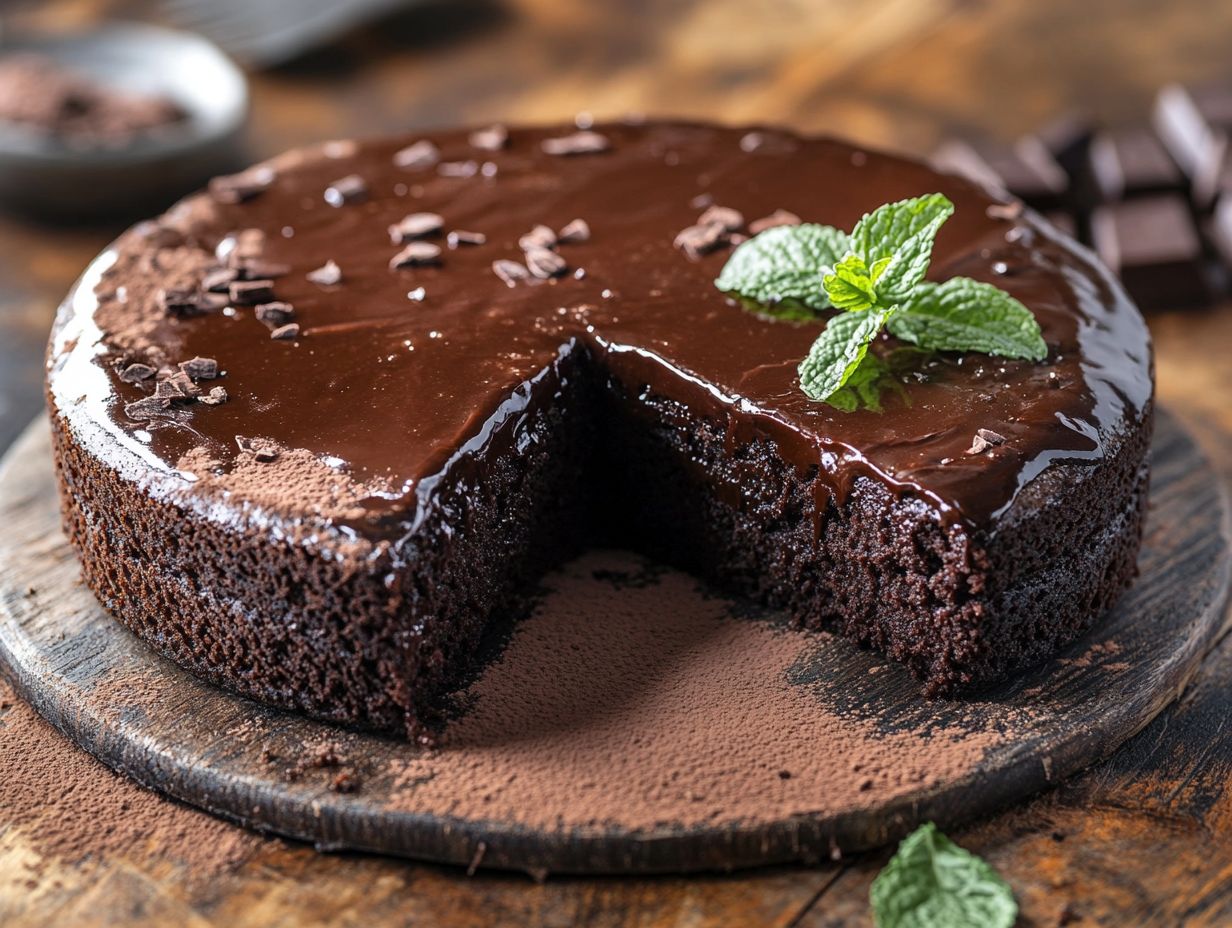
Using a cake tester is an essential tool in your baking arsenal. It helps you determine when your cake has reached that perfect state of doneness while keeping it moist and delicious. By inserting the tester into the center of the cake, you can effortlessly check for any wet batter or crumbs. If it emerges clean or with a few moist crumbs, your cake is done!
To maximize the effectiveness of your cake tester, resist the urge to test too early to avoid an inaccurate judgment of doneness. Along with using a cake tester, you can gently press the top of the cake; if it springs back, it s a sure sign that it’s fully baked.
Also, pay attention to the edges of the cake; when you notice the sides slightly pulling away from the pan, it s often a clear indication that your cake is ready. Ultimately, perfecting your cake baking skills requires a harmonious blend of technique and intuition, ensuring that each slice is irresistibly moist and bursting with flavor.
Now that you have these tips at your disposal, why not try them out in your next baking adventure? Share your baking successes with others and foster a community of passionate bakers!
4. Let the Cake Cool Properly
Allowing your cake to cool properly is a crucial step that many people overlook, yet it can profoundly affect both its moisture and overall quality. Once you take the cake out of the oven, transferring it to a cooling rack is essential. This simple act promotes airflow around the cake, preventing steam from accumulating and turning your masterpiece into a soggy disappointment. This cooling process is vital for achieving that perfect moist texture without risking a dense outcome.
Typically, you should let the cake cool in the pan for about 10 to 15 minutes just enough time for it to firm up before you gently remove it. Once it s on the rack, it s important to practice a little patience and resist the urge to rush things. Letting the cake cool completely, ideally for at least an hour or two, enhances its texture by allowing residual heat to dissipate, which helps preserve the cake’s moisture. If you re planning to frost the cake, make sure it s completely cool to prevent the frosting from melting or sliding off.
Skipping this crucial step could lead to a gummy center, ultimately diminishing your enjoyment of this delightful treat.
What Are Some Common Mistakes That Can Lead to Dry Cakes?
Identifying common mistakes that can lead to dry cakes is crucial for anyone who wants to bake perfectly. One of the main causes is overbaking, where you might leave your cakes in the oven just a tad too long, resulting in a dry texture that undermines the cake’s overall quality.
Common Mistakes
Other prevalent missteps include using an excessive amount of flour, not adding enough liquid, or relying on outdated ingredients. Each of these factors can contribute to a dense cake and less-than-satisfactory outcome.
1. Overbaking
Overbaking is a main cause of dry cake. It removes moisture, affecting both texture and taste. You should monitor the baking time closely and use tools like a cake tester to check for doneness, preventing this all-too-common pitfall. Act quickly! Even a minute can change everything!
Being aware of the specific quirks of your oven can greatly influence your baking results. Ovens often have hot spots or may not be perfectly calibrated, which can lead to uneven baking if you re not mindful of these factors.
To ensure your cake comes out with the perfect moistness and texture, consider investing in an oven thermometer. By adjusting your baking times based on these insights and recognizing the telltale signs of overbaking like a noticeably darkened crust or an overly firm texture you can achieve that ideal golden-brown finish while preserving all the delicious moisture within.
Remember, patience and observation are your best allies in this intricate art of baking. You ll be amazed at the difference it can make!
2. Using Too Much Flour
Using too much flour can turn your cake into a dry disappointment. It disrupts the balance of dry and wet ingredients, creating a dense texture you definitely want to avoid.
Accurate measuring is essential for the right cake batter proportions. Use a kitchen scale or spoon flour into a measuring cup for the best results.
To prevent compaction, allow the flour to aerate before measuring. You can do this by sifting or whisking it lightly. If you’ve added too much flour, adjust the wet ingredients by adding an extra egg or increasing the liquid.
Keep an eye on mixing times and ingredient interactions. This helps ensure your cake is perfectly moist and a pleasure to savor.
3. Not Enough Liquid
A cake that doesn t have enough liquid will dry out fast! Moisture is key to achieving that tender crumb and maintaining the overall quality of your creation. Incorporating ingredients like buttermilk, sour cream, or yogurt adds both moisture and richness to your cake.
When following a cake recipe, it s vital to stick to the recommended liquid measurements. This ensures proper hydration and enhances flavor while keeping that dreaded dry texture at bay.
Each liquid ingredient contributes its unique charm to the batter. Buttermilk lends a delightful tanginess that elevates flavor, while sour cream introduces a dense creaminess that reinforces both structure and moisture. Yogurt offers a subtle tartness, aiding in achieving a soft, inviting texture. For an extra creamy and rich batter, consider adding cream cheese.
If your cake batter is too thick, don t hesitate to add a splash more buttermilk or a touch of water. You can also use whipping cream to adjust consistency, adding richness to your batter.
Alternatively, drizzling in some melted butter or vegetable oil can infuse extra moisture without sacrificing flavor. Just remember to be cautious with the quantities; make adjustments gradually to maintain a balanced batter consistency, ensuring your cake turns out perfectly.
4. Using Old Ingredients: Ensuring Cake Quality
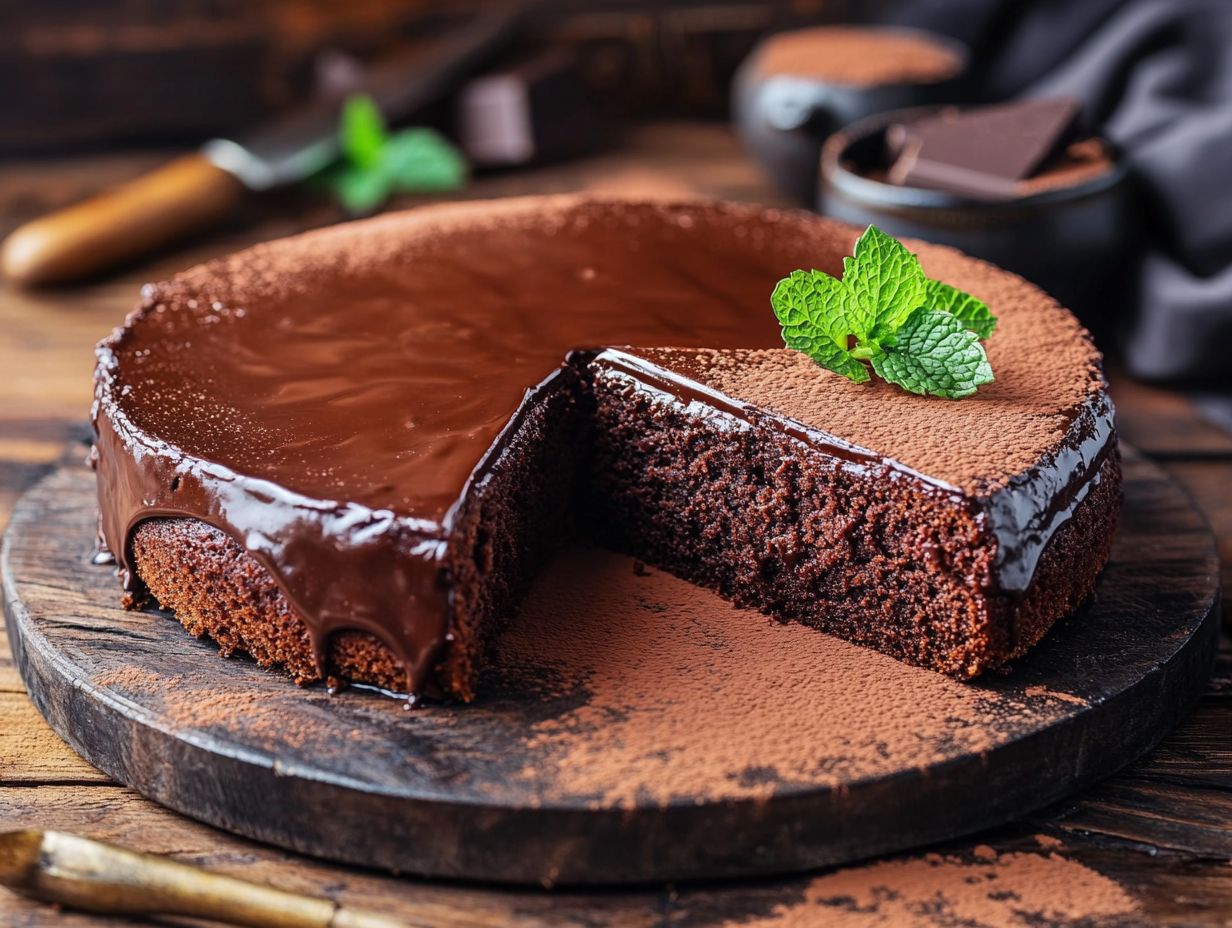
Using old or expired ingredients can dramatically compromise the quality of your cake, resulting in dryness and unappealing flavors. Baking powder and baking soda, in particular, lose their effectiveness over time, affecting your cake’s rise and, consequently, its texture. To achieve consistently moist and delightful cake results, it s essential to ensure that all your ingredients are fresh and well within their expiration dates. This is vital for achieving a moist crumb and avoiding the dreaded dry cake.
To keep your ingredients fresh, store leavening agents in a cool, dry place, away from moisture and temperature fluctuations. These elements can significantly diminish their effectiveness. For dairy products like milk and eggs, refrigeration is essential; always check the sell-by date and aim to use them within a week of opening to maintain optimal flavor and quality. Keeping butter and other fats at room temperature helps with smoother mixing.
Opting for airtight containers can also be a game changer, as they prevent exposure to air and humidity, extending the shelf life of your ingredients. Remember, old ingredients not only affect the rise of your cake but can also introduce off-flavors, making the final product less enjoyable. Using high-quality cake flour or a cake flour substitute can improve your cake structure and texture.
Regularly checking your pantry can take your baking to the next level! This practice significantly elevates your baking outcomes and ensures quality results for your homemade cakes.
Unlock the secrets of baking science and discover top techniques through our engaging video tutorials.
Frequently Asked Questions – Baking Success
What Is the Secret to Moist Cakes? – Kitchen Tips
The secret to moist cakes lies in the ingredients and baking process used. Some key factors include using the right amount of liquid and fat, gentle mixing, and proper baking time and temperature. Incorporating ingredients like egg whites and simple syrup a mixture of sugar and water can boost moisture levels.
How can I ensure my cakes turn out moist? – Recipe and Baking Method
To ensure moist cakes, be sure to measure and use the ingredients accurately. Use moistening agents such as buttermilk, yogurt, or sour cream. Also, make sure not to overmix the batter and avoid opening the oven door too often while baking. Accurate measuring flour and maintaining proper baking temperature and baking time are crucial.
Can I substitute oil for butter in cake recipes to make them more moist? – Culinary Techniques
Yes, you can substitute oil for butter in cake recipes to make them more moist. Oil has a higher fat content and will result in a moister cake. Just be sure to use the same amount of oil as the butter called for in the recipe. This substitution can be particularly helpful in dense cake recipes.
Why are my cakes always dry and crumbly? – Kitchen Tips
If your cakes always turn out dry and crumbly, it could be due to not enough liquid in the batter, overmixing, or overbaking. Make sure to follow the recipe and baking instructions carefully and avoid overworking the batter. Utilizing proper mixing techniques and adjusting cooking time can improve your texture outcome.
Are there any ingredients I can add to my cake batter to make it more moist? – Cake Development
Yes, there are several ingredients you can add to your cake batter to make it more moist, such as applesauce, mashed bananas, or pureed canned fruit. These ingredients add moisture without affecting the flavor too much. For an added flavor boost, consider incorporating ingredients like cream cheese or frosting.
How can I make sure my cakes stay moist after baking? – Sweet Treats
To ensure your cakes stay moist after baking, wrap them tightly in plastic wrap or aluminum foil while still warm. This will help trap in the moisture and prevent the cake from drying out. You can also brush a simple syrup over the top of the cake to add extra moisture. Storing your cakes properly will maintain their cake quality and moist crumb.
Try these tips today and share your baking successes with us!

